The journey to literacy begins with letter recognition, and engaging alphabet activities for preschool children make this fundamental learning process both fun and effective. Between the ages of 3-5, preschoolers are naturally curious and eager to explore the world of letters through play-based learning. Rather than relying on repetitive drills or flashcards alone, incorporating creative, multisensory alphabet activities helps young children develop essential pre-reading skills while nurturing their enthusiasm for learning. Whether you’re a parent enhancing learning at home or an educator designing classroom experiences, these developmentally appropriate alphabet activities will capture preschoolers’ imaginations and build a strong foundation for future reading success.
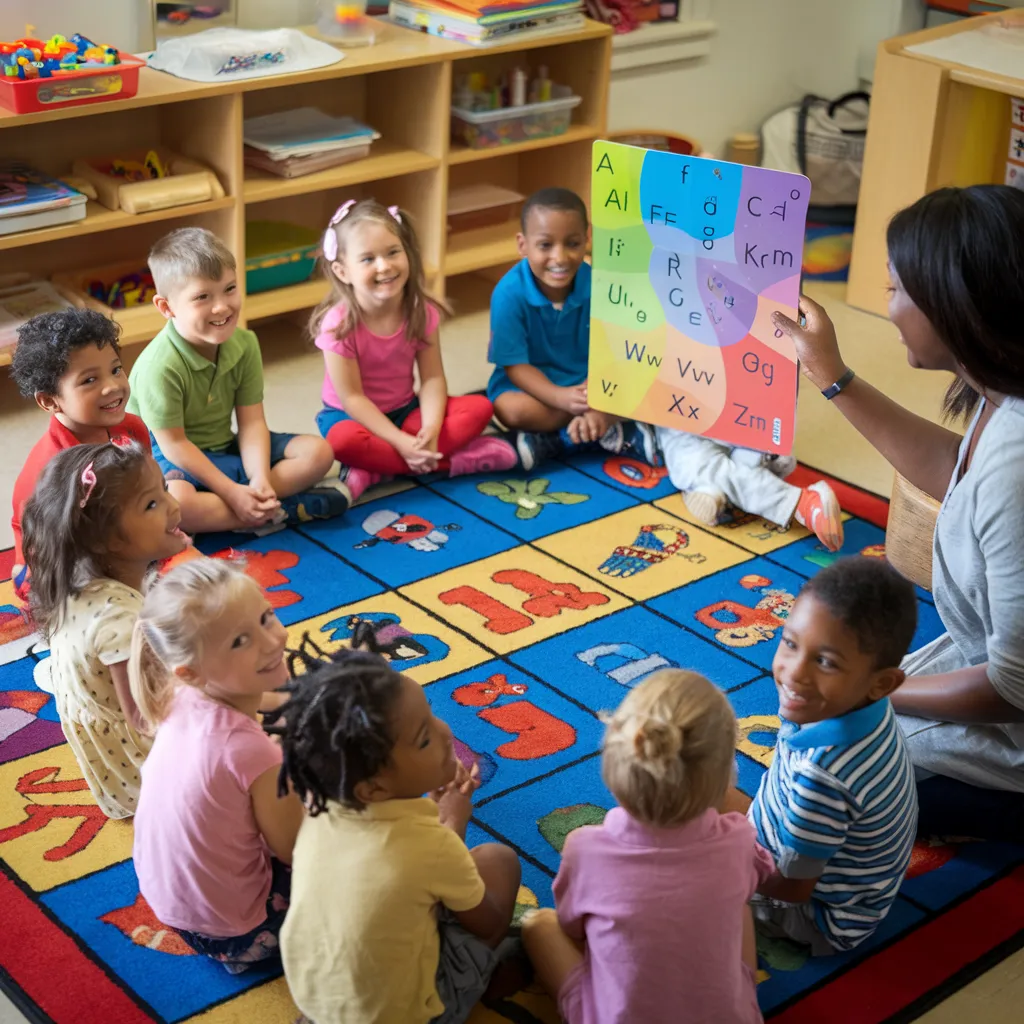
Why Alphabet Activities Matter for Preschoolers
Before diving into specific activities, it’s important to understand the developmental significance of alphabet learning during the preschool years.
The Building Blocks of Early Literacy
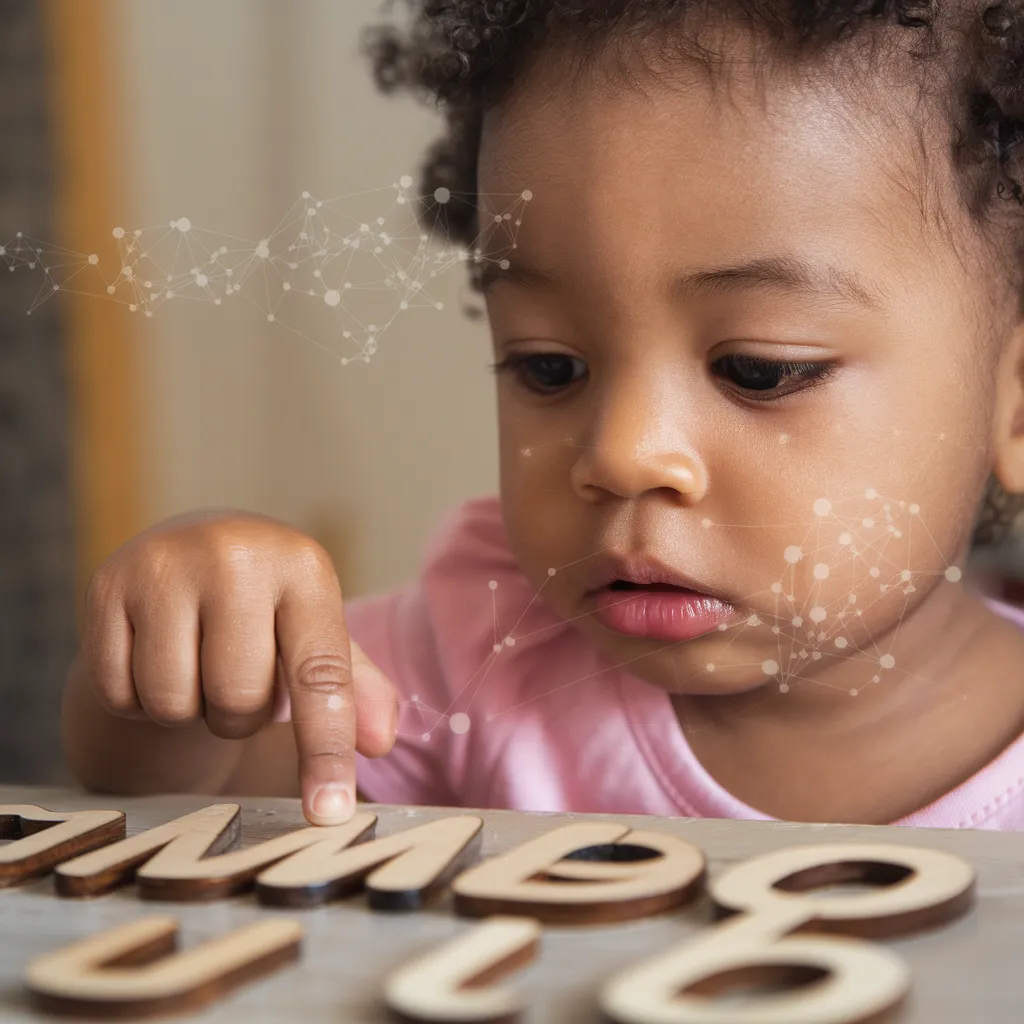
Alphabet knowledge—recognizing letters and understanding the sounds they represent—serves as one of the strongest predictors of later reading achievement. Research consistently shows that children who enter kindergarten with solid letter recognition skills typically have an easier transition to formal reading instruction.
For preschoolers, effective alphabet activities should:
- Engage multiple senses
- Connect to children’s interests and experiences
- Provide opportunities for exploration and discovery
- Incorporate movement and play
- Build confidence through repeated success
Multisensory Alphabet Activities Preschool Teachers Recommend
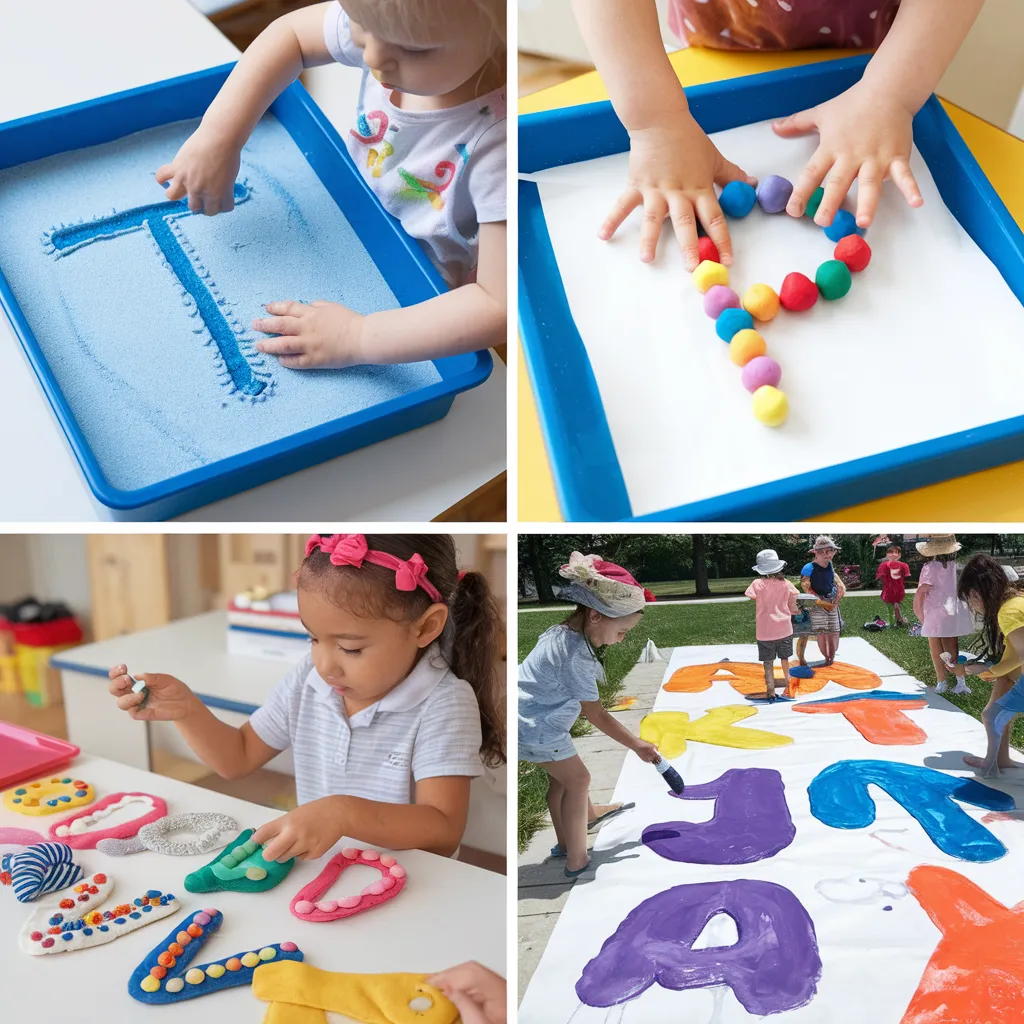
Tactile Exploration Activities
Young children learn best when they can touch, manipulate, and physically interact with materials. These hands-on experiences create stronger neural connections than visual exposure alone.
- Sensory Letter Tracing Bins: Fill shallow containers with sand, salt, shaving cream, or rice. Demonstrate letter formations, then invite children to trace letters with their fingers.
- Playdough Letter Sculpting: Roll playdough snakes to form letters, or press playdough onto letter templates. Add letter cookie cutters for additional exploration.
- Textured Letter Matching: Create textured letters using sandpaper, fabric scraps, or bubble wrap. Children can match these to printed letter cards while experiencing different sensations.
- Water Painting: Provide large paintbrushes and buckets of water for « painting » giant letters on sidewalks, fences, or outdoor walls—the temporary nature encourages repeated practice.
- Letter Construction: Use craft sticks, pipe cleaners, straws, or magnetic tiles to build letter shapes, developing both fine motor skills and letter recognition.
Movement-Based Letter Learning
Incorporating physical activity into alphabet activities for preschool children not only makes learning more enjoyable but also helps kinesthetic learners process information more effectively.
- Alphabet Yoga: Create poses that resemble letter shapes— »S » for snake pose, « T » for tree pose, or design your own letter-inspired movements.
- Letter Treasure Hunt: Hide letter cards around a room or outdoor space. Call out a letter sound and have children find the corresponding letter.
- Alphabet Hopscotch: Draw a hopscotch grid with letters instead of numbers. Children can hop while naming letters or producing their sounds.
- Letter Freeze Dance: Play music and have children dance. When the music stops, show a letter card and have them freeze in that letter’s shape.
- Letter Ball Toss: Write letters on a beach ball. When children catch the ball, they identify the letter closest to their right thumb.
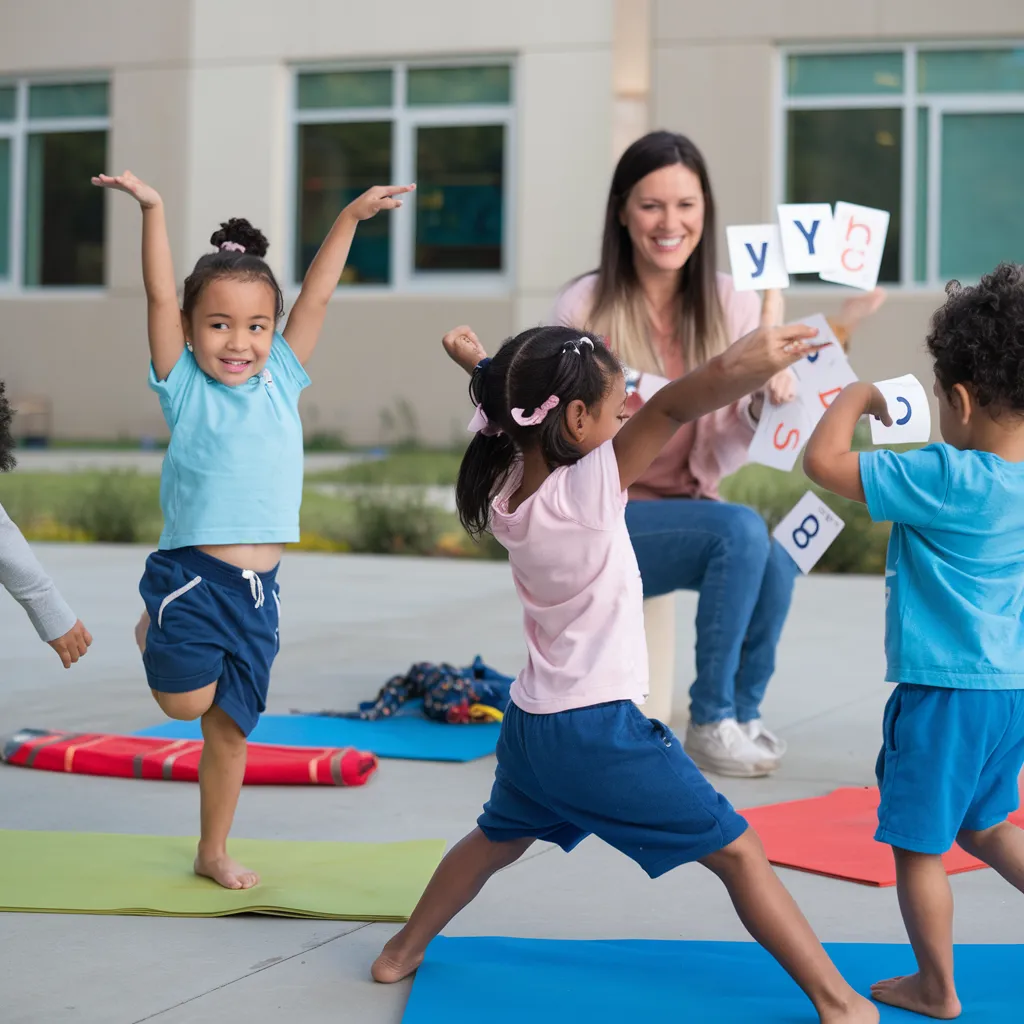
Creative Arts and Crafts
Art-based alphabet activities preschool children enjoy help make abstract letter symbols more concrete while encouraging creative expression.
- Letter Collages: Assign a letter to each child. Have them cut pictures from magazines representing objects that start with their letter and glue them onto a large letter cutout.
- Alphabet Stamping: Use commercial letter stamps or make your own from wine corks, foam, or potatoes to create alphabet prints.
- Letter of the Week Crowns: Create paper crowns featuring the « letter of the week » decorated with stickers or drawings of items beginning with that letter.
- Alphabet Creatures: Transform letters into animals or characters. For example, « S » becomes a snake, « B » becomes a butterfly, or « O » becomes an owl.
- Alphabet Photography: Take children on a « letter hunt » walk with cameras or tablets to photograph objects that resemble letters (a slide shaped like an « S » or a door frame forming an « H »).
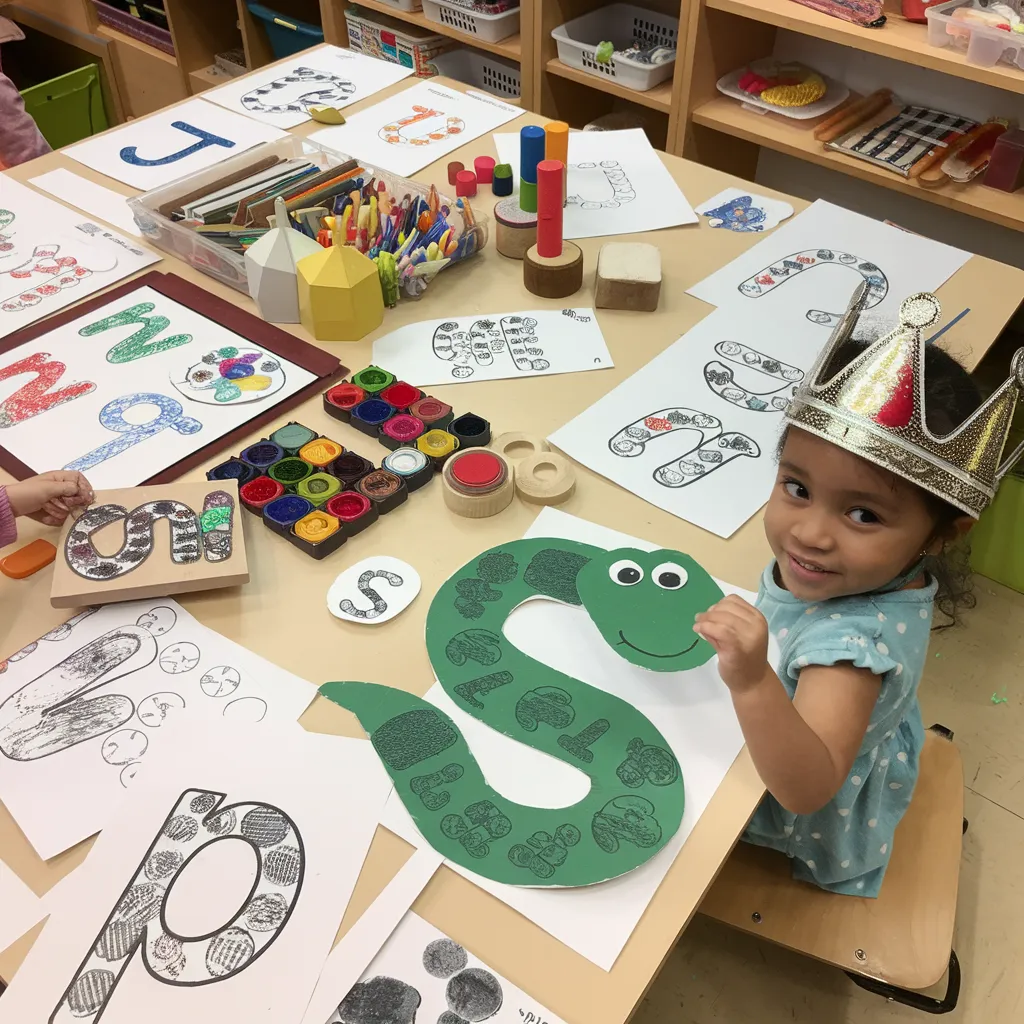
Incorporating Alphabet Activities into Daily Preschool Routines
Literacy-Rich Environment Strategies
Consistent exposure to letters throughout the day reinforces learning naturally. Try these approaches to weave alphabet activities preschool children will enjoy into everyday routines:
- Morning Name Check-In: Create a board where children find their names and move them to an « I’m Here Today » section, drawing attention to initial letters.
- Alphabet Snacks: Serve foods shaped like the letter you’re studying or foods that begin with target letters (bananas for « B » day).
- Letter-Based Story Selection: Choose books featuring the focus letter, pointing it out on the pages during reading time.
- Label Everything: Create clear, attractive labels for classroom areas and materials, regularly directing children’s attention to these environmental print examples.
- Alphabet Songs and Transitions: Use alphabet songs or letter-specific chants when transitioning between activities.
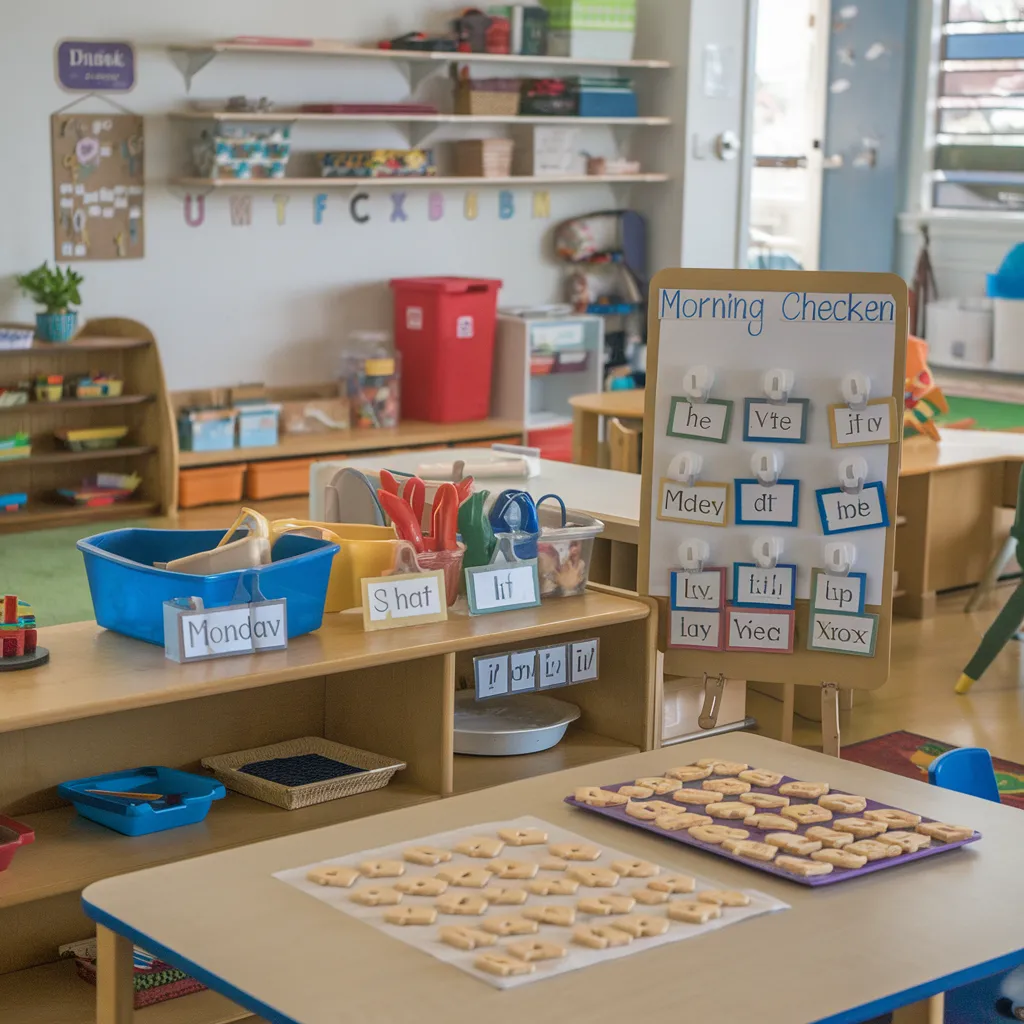
Technology-Enhanced Alphabet Learning
When used thoughtfully, technology can supplement hands-on alphabet activities for preschool learners:
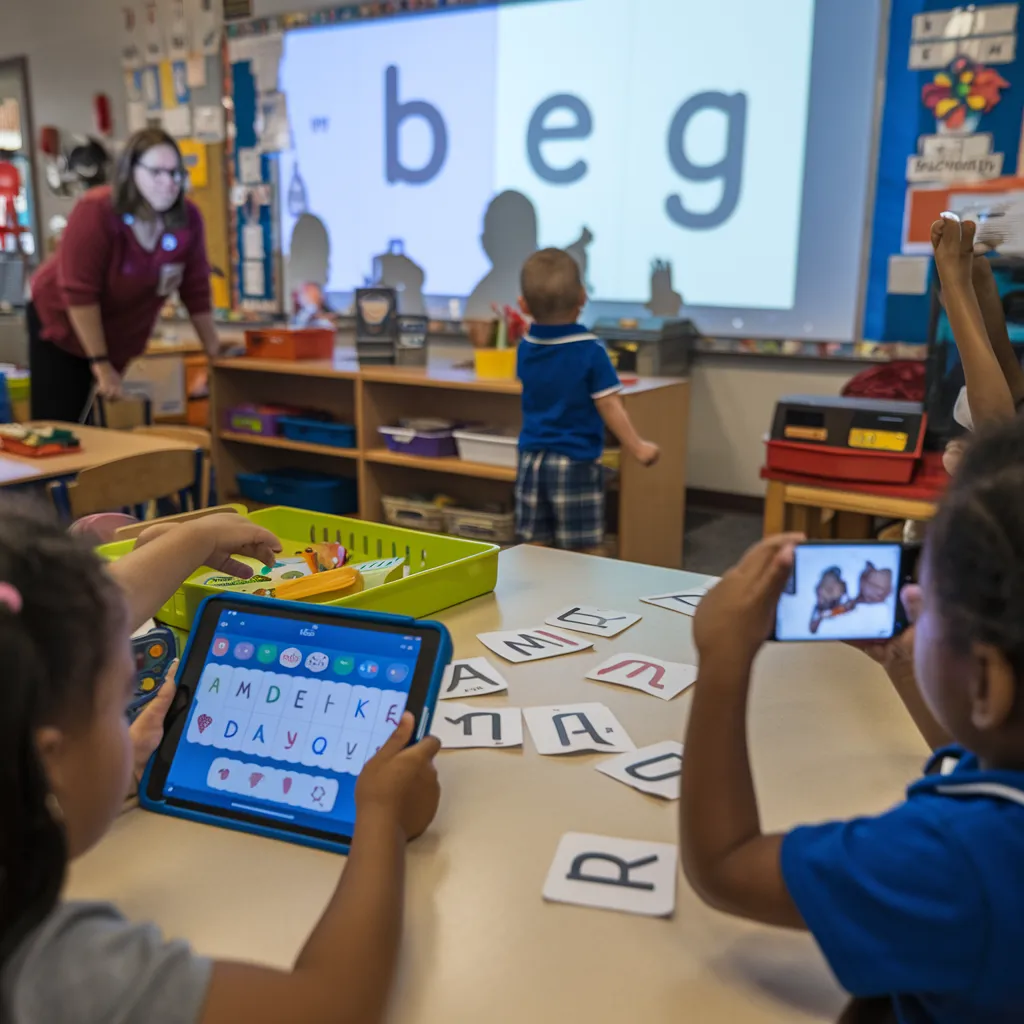
- Interactive Alphabet Apps: Select developmentally appropriate applications that emphasize proper letter formation and phonics connections.
- Digital Letter Hunts: Take photos of children finding letter shapes in the environment, then create digital alphabet books using these personalized images.
- Letter Sound Recording: Record children making the sounds associated with different letters, then let them listen and identify which letter matches each sound.
- Shadow Letter Play: Use a projector or flashlight to create shadow letters on a wall. Children can trace the projections or try to recreate them with their bodies.
- Virtual Letter Matching: Create simple digital matching games connecting letters to beginning sounds or objects.
Conclusion
Implementing engaging alphabet activities preschool children enjoy creates meaningful learning experiences that build essential pre-literacy skills. By incorporating multisensory exploration, movement, creativity, and play, you help young children develop positive associations with letters while laying the groundwork for reading success. Remember that consistency, enthusiasm, and following the child’s lead will yield the best results. Start with just a few activities that align with your preschoolers’ interests and gradually expand your repertoire as their confidence grows. By making alphabet learning a joyful adventure rather than a task to be completed, you nurture both crucial skills and a lifelong love of learning.
FAQ About Alphabet Activities for Preschoolers
When should I start introducing alphabet activities to my preschooler?
Most children are ready for playful alphabet exposure between ages 2-3, with more focused activities appropriate around ages 3-5. Look for signs of readiness such as asking about letters, showing interest in books, or noticing environmental print (like logos or signs). Remember that development varies widely—follow your child’s interest level rather than adhering to rigid age guidelines.
Should I teach letter names or letter sounds first?
Many early childhood experts recommend teaching both simultaneously, though with a slight emphasis on sounds since these are more directly connected to reading skills. When introducing a letter, you might say « This is the letter B. It makes the /b/ sound like in ball, bear, and bug. » Some children learn letter names more easily first, while others connect more quickly with sounds—both approaches can be effective when implemented consistently.
How can I help a preschooler who shows little interest in alphabet activities?
Rather than forcing alphabet learning, connect letters to the child’s existing interests. If they love dinosaurs, explore dinosaur names and their beginning letters. For vehicle enthusiasts, point out letters on license plates or road signs. Keep activities playful and brief (5-10 minutes), and watch for engagement cues. Sometimes stepping back and reintroducing alphabet concepts later results in greater receptivity. Focus first on building positive associations with books and language through regular read-alouds and conversation.
How many letters should I introduce at once during preschool alphabet activities?
For younger preschoolers (3-4), focus on just 1-2 new letters per week, starting with letters in their name or letters that hold personal significance. Older preschoolers (4-5) might be ready for 2-3 new letters weekly. Regardless of age, ensure plenty of review and repetition of previously introduced letters. Many educators follow a « letter of the week » approach while still maintaining exposure to the entire alphabet through songs, books, and environmental print.
What’s more important for preschoolers—uppercase or lowercase letters?
While many traditional approaches begin with uppercase letters because they’re visually simpler and more distinct from each other, research suggests introducing both forms simultaneously creates more authentic literacy experiences. Uppercase letters appear at the beginning of names and sentences, but lowercase letters appear far more frequently in the texts children will eventually read. When planning alphabet activities, preschool teachers often introduce both forms together while drawing attention to their connections and differences.

Ping : 20 Powerful Letter Recognition Games That Transform Early Literacy - smartkidsprintable